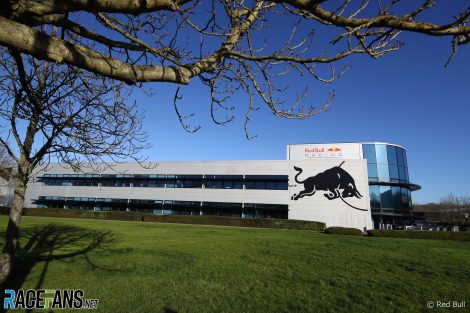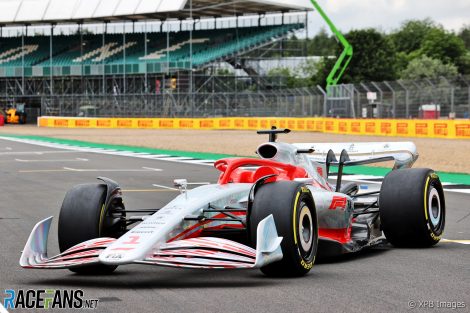With a raft of technical regulation changes, a second race in the United States, new, larger wheels and complete uncertainty over what the grid order could be come the opening race in Bahrain, the 2022 Formula 1 season is among the most anticipated for many years.
To keep track of what is new for this year’s upcoming season, here is a quick guide to the biggest changes to F1 ahead of the 73rd world championship season.Teams and power units
For the fifth consecutive season, no new teams will be joining the Formula 1 grid this upcoming season, meaning that the 2022 championship will again be contested by just ten teams.
After powering Max Verstappen and Red Bull to last year’s drivers’ championship, Honda have departed the sport for the second time in just over a decade. Their withdrawal, however, will be predominantly in name-only as Honda will continue to provide engineering and race operation support for the newly formed Red Bull Powertrains division throughout the 2022 season.

As announced almost one year ago, Williams will race in 2022 using gearboxes and hydraulics supplied by their power unit provider, Mercedes.
Ferrari will no longer race with the title sponsorship of Phillip Morris brand Mission Winnow.
Drivers
Of the 20 seats on the 2022 grid for this season, only four will be occupied by different drivers than they were last year.
The most notable change is that George Russell has been promoted to constructors’ champions Mercedes to race alongside Lewis Hamilton following three seasons at Williams. Russell has a single race appearance for Mercedes having stepped in for Hamilton at the 2020 Sakhir Grand Prix.

It is an all-new line-up for Alfa Romeo, who have bid farewell to the retired Kimi Raikkonen and Antonio Giovinazzi. In their place are former Mercedes driver Valtteri Bottas and Alpine-backed rookie Guanyu Zhou, who becomes the first ever Chinese driver to race in Formula 1.
- George Russell has joined Mercedes in place of Valtteri Bottas
- Alexander Albon has joined Williams in place of Russell
- Valtteri Bottas and Guanyu Zhou have formed an all-new driver line-up at Alfa Romeo in place of Kimi Raikkonen and Antonio Giovinazzi.
As is his right under the sporting regulations, world champion Verstappen will race using the number one as his driver number for the 2022 instead of his usual 33. This marks the first time that a driver will race using the number one reserved for world champions since Sebastian Vettel in the 2014 season.
Races
The 2022 F1 calendar could set a new record for the longest season in history if all 23 races go ahead as planned.
As with last year, the season will begin in late March with the Bahrain Grand Prix, but will be followed immediately by a return to Jeddah Corniche Circuit for the Saudi Arabian Grand Prix. Yet again, the final grand prix will be held at the Yas Marina circuit in Abu Dhabi, but significantly earlier in the year on November 20.

After missing the previous two seasons due to the impact of the coronavirus pandemic, this year should see the return of the Australian, Canadian, Singapore and Japanese Grands Prix to the calendar for 2022.
Teams will face three consecutive race weekends twice in 2022. The first triple header immediately follows the end of the summer break with the Belgian, Dutch and Italian Grands Prix, with the second coming after a two week gap, featuring the Russian, Singapore and Japanese Grands Prix.
While there will be no Portuguese Grand Prix at Autodromo do Algarve or Turkish Grand Prix at Istanbul this season, the Emilia-Romagna Grand Prix will return at the Imola circuit. There are no plans for multiple races at the same venue, such as the Austrian and Styrian Grands Prix seen during the 2020 and 2021 seasons.
Sprint qualifying races will likely be featured in a greater number of rounds this season. While not yet confirmed, teams have been advised by Formula 1 that sprint qualifying races will be held at six grands prix in 2022:
- Bahrain Grand Prix – Sakhir – 19th March
- Emilia-Romagna Grand Prix – Imola – 23rd April
- Canadian Grand Prix – Montreal – 18th June
- Austrian Grand Prix – Red Bull Ring – 10th July
- Dutch Grand Prix – Zandvoort – 3th September
- Sao Paulo Grand Prix – Interlagos – 12th November
New rules
This season finally sees a dramatic overhaul of aerodynamic regulations designed to provoke closer racing after their introduction was delayed by a year due to the effects of Covid.
Extensive rules changes include upper surface bodywork being simplified with large ‘tunnels’ shaped into the underside of cars to generate ground effect and produce downforce instead. Teams are also now required by the rules to include strakes over the front wheels to reduce turbulent air.

The heavy aerodynamic modifications should, in theory, allow for drivers to race closer to rivals ahead without suffering from heavy loss of downforce, making overtaking easier and improving racing. However, the Drag Reduction System overtaking aid will remain on cars for this season.
After many years, Formula 1 cars bid farewell to the 13-inch wheels this season and move to 18-inch wheels from 2022 onwards. F1 cars will also run using fuels containing 10% bio-component in 2022 – an increase over 5.75% from last season.
On the track, sprint qualifying races have been modified for this season, with the driver who finishes quickest at the end of Friday’s three stage qualifying session deemed to be on ‘pole position’. The grid for Sunday’s grand prix will again be determined by the finishing order of the sprint qualifying race, with points again rewarded for top three finishers in the sprint race. However, the possibility for extending points beyond the top three has been discussed between Formula 1 and its teams.
Finally, after the budget cap was introduced for teams in 2021, the maximum limit on teams’ operating costs for the season will fall from $145 million to $140 million in 2022. An additional allowance of up to $500,000 for damages sustained in sprint races in each of the six rounds that feature them.
Advert | Become a RaceFans supporter and
2022 F1 season
- Mercedes told me “you’re wrong” about 2022 car’s problems – Hamilton
- FIA confirms all 10 F1 teams complied with 2022 cost cap
- Steiner “not ashamed” of panning “slow” Schumacher in Drive to Survive
- Albon believes year out of F1 improved him as a driver
- Hamilton sees diversity gains in F1 years on from his ‘traumatising’ experience of racism





Jere (@jerejj)
1st January 2022, 8:53
I’d replace Imola & Zandvoort with Spa & COTA since the latter two are more overtaking/racing-friendly.
I’m still surprised two not-so passing-friendly tracks got chosen rather than only historically good ones.
Abu Dhabi GP occurring three weeks earlier than in the last two seasons & in November is good for a change.
I envision December 3 as the 2023 Abu Dhabi GP race day, albeit that would also be earlier than the last two seasons. BTW, Zhou isn’t Alpine-backed anymore.
Qeki (@qeki)
1st January 2022, 9:11
Shouldn’t it then be Alpine Renault and not only Alpine if Renault is making their engines? Or is it something to do with Renault owning Alpine?
Tommy Scragend
1st January 2022, 12:30
The constructor is Alpine-Renault, as per the official FIA entry list:
https://www.fia.com/events/fia-formula-one-world-championship/season-2021/2021-and-2022-fia-formula-one-world
I can’t see anyone saying that it isn’t?
Qeki (@qeki)
2nd January 2022, 6:30
I was just thinking in the broadcast they only show “Alpine” as “Ferrari” and not like “Aston Martin Mercedes”
playstation361
1st January 2022, 9:15
I hope things begin and ends well.
Corsair
1st January 2022, 9:35
Ugh. Why? If pole position is determined by the three phase qualifying why have sprint determine start order and give points that impact the championship?
Have Sprint be its own thing.
Bullfrog (@bullfrog)
1st January 2022, 19:18
Yes. Then teams could run reserve drivers in it – a great way for Oscar Piastri to show the world what he can do.
Maybe the sprint should go on Friday with qualifying always on a Saturday.
Corsair
1st January 2022, 9:46
Oh yes, let’s not forget the freeze on Power Units to, yet again, accommodate Red Bull.
RandomMallard
1st January 2022, 10:23
The freeze was already planned in 2023 for 3 seasons to develop the 2026 PUs. What the teams unanimously voted for was moving the freeze one year forward to 2022, as well as the new PUs forward one year to 2025 (with the net effect being it’s now looking like Audi will join in 2025 instead of 2026, if that comes to fruition). Nobody had any objections to the freeze, they all voted in favour of it
JohnH (@johnrkh)
1st January 2022, 12:51
RandomMallard Just thinking maybe Merc do now :))
Andy (@andyfromsandy)
1st January 2022, 9:54
The one thing missed is the sliding scale on development time both in the wind tunnel and computer simulation use.
The team that finished 7th gets 100%. Mercedes gets 70%, RBR 75%, etc. Haas gets 115%.
Napier Railton (@napierrailton)
1st January 2022, 11:22
this and the budget cap could make this coming season very hard to predict.
How much difference is the extra time going to make when they are all capped on spending?
RandomMallard
1st January 2022, 10:25
Keith I’m assuming that photo of Miami is the track build in progress? Is there any possibility of an article on how progress is being made? I quite enjoyed the ones about Jeddah as that was going through various stages of construction, and it’s approaching a time where Miami should (hopefully) be starting to take shape.